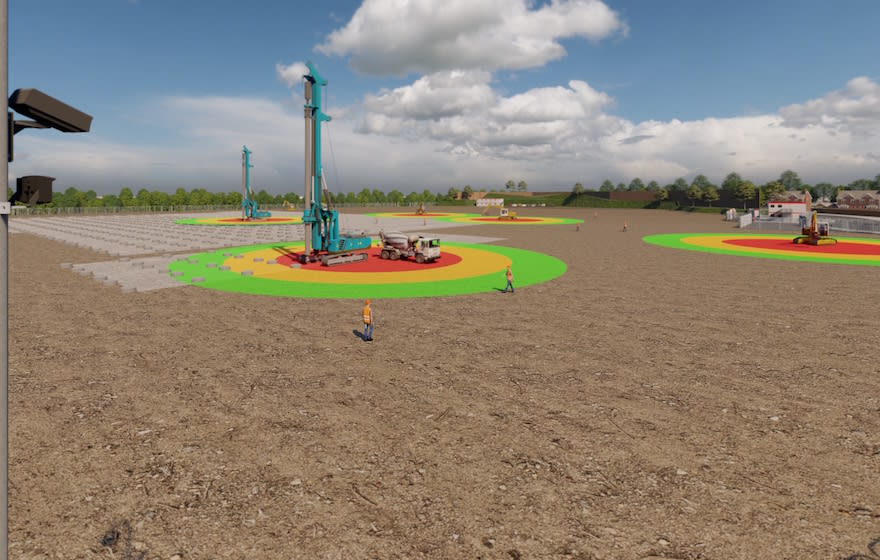A Winvic Construction consortium is developing software that combines real-time image and machine learning technologies to detect, recognise and track hazards on a construction site and then alert nearby operatives via GPS devices.
The project, dubbed as Computer-Vision-SMART (Computer Vision and IoT for Personalised Site Monitoring Analytics in Real Time), will run for two years and is funded by Innovate UK.
As well as Winvic, the consortium includes the Big Data Enterprise and Artificial Intelligence Lab (Big-DEAL) at the University of the West of England (UWE Bristol) and industrial intelligent video specialists One Big Circle Consortium.
Two Winvic project sites will take part in the project.
How it works
Interior and exterior site cameras will continuously capture video images. Via AI, any hazards – from moving heavy machinery to overhead works to people operating without the correct PPE – will be identified.
Over the length of the project, the machine learning models will be able to make an increasing number of intelligent predictions.
Safe space radii, or zones, will be predetermined and applied to each hazard.
Exact operator and hazard locations are understood through a geographic information system (GIS). When an operator enters a hazard zone, the individual – and when appropriate other members of the site team – will receive a personal alert via an app on a wearable or mobile device. Managers can also review alerts and relevant video segments from a laptop-based app.
If the system identifies an operator not wearing the appropriate PPE, the person and project manager will be alerted of the issue.
Each hazard radii will comprise four zones (SAFE):
- Safe: a site worker is in a safe location and won’t receive an alert;
- Alert: a site worker is alerted to a possible risk;
- Full alert: a site worker receives a consistent alert;
- Escalate: there is a site wide alert of an immediate health and safety concern.

Rainbow warnings: the Computer-Vision-SMART applies safe space radii around potential hazards
The reasoning behind the project
The project team identified a “clear need for the development and widespread use of digital technologies within construction health and safety” and wanted to address the following concerns:
- existing vision-based approaches to construction site monitoring only focus on areas such as site security, dispute avoidance and time-lapse project progress, and applications to improve people’s safety are lacking;
- HSEQ managers and operatives depend on self-reporting or warnings from co-workers, which can simply come too late to avoid an incident.
The project team decided that to achieve a zero-harm target, health and safety best practice must be “reimagined using effective digitisation alongside appropriate social interventions, delivering a solution where social and technical systems overlap”.
Tim Reeve, Winvic’s technical director is leading the Computer-Vision-SMART project on the main contractor’s team. He said: “Using intelligent digital technologies in construction to deliver projects more rapidly, cost-effectively and safely is a passion of Winvic’s and this forward-thinking health and safety initiative is truly ground-breaking.
“There is a clear gap in this area of construction safety, where social and technical efforts can successfully converge, and with the solution that has been conceived will come better opportunities than ever before to reach our zero-harm aim.
“It’s a very exciting time in the world of digital transformation, and our achievements over the next two years will generate a significant leap forward for safety across the whole of the construction industry.”
Olugbenga Akinade, an associate professor at UWE Bristol and principal investigator, said: “We are convinced that Computer-Vision-SMART will deliver a step-change that will enable us to explore the socio-technical overlap of behaviour-based safety on construction sites. The project will further mature our capabilities in delivering high impact research and to establish UWE Bristol as a business-facing university.”
Emily Kent, founder and director of One Big Circle, added: “The power of a collaboration such as the Computer-Vision-SMART group means we can steer our video and computer vision expertise according to industrial need, working closely with others who are also experts in their own fields. We have been successful with this approach in highways and rail previously and are very excited about working alongside Winvic and UWE in delivering this advanced capability in the construction industry.”











